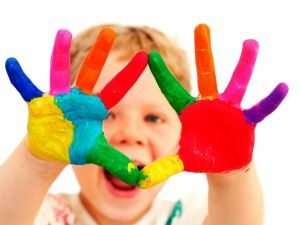 Art therapy is one of the areas of psychotherapy with art. Doctors offer to draw thematic pictures or create pictures at will - so in psychology the degree of the disease is determined, and at the same time it gives the patient to concentrate on the process - this is a natural form of correction of the emotional state.
Art therapy is one of the areas of psychotherapy with art. Doctors offer to draw thematic pictures or create pictures at will - so in psychology the degree of the disease is determined, and at the same time it gives the patient to concentrate on the process - this is a natural form of correction of the emotional state.
Also, it is possible to use other forms of creativity: sculpture, sewing, vocal, poetry.
In 1938, Adrian Hill, describing his work in sanatoria, introduced the term "art therapy", and in the late 20th century, this type of therapy was used in medical, corrective and rehabilitation facilities.
Due to its effectiveness, availability in application and ease of implementation of the procedure, it has occupied a significant place in the treatment of neurological and mental diseases.
Role of art therapy in neurology and psychology
Many neurological and psychological diseases - both in adults and children - often have one feature - a patient, because of the complexity of verbal communication, prefers to withdraw into themselves. The socialization and rehabilitation of such patients are, first of all, in procedures aimed at its active participation in activities.
Patients with central nervous system lesions having such diagnoses, such as: stroke, sequelae of traumatic brain injury, etc., experience similar destabilizing sensations. General depression, drowsiness, a sense of fear, anxiety.
Procedures and art therapy exercises in such cases are of a stabilizing nature, and the patient, in a very short time, becomes more balanced  .
.
Psychosomatic disorders are significantly corrected, the state of dormancy is stabilized, and the integration of the individual into public life is greatly enhanced.
Thanks to the procedures of art therapy, the physical parameters of the patient improve. Fine motor skills and speech become more deliberate, the patient is noticeably less irritated in case he does not get exactly what he has conceived.
Patients undergoing rehabilitation after strokes experience very hard moments when simple movements that they repeat throughout their life, such as taking a spoon, buttoning up a button or tying shoelaces, prove to be the most complicated procedures.
Interested in art therapy, they do not perceive it as a cure, but consider it pastime, and with the proper delivery of a doctor and loved ones - as a significant help. This makes their work meaningful and painstaking. Fine motor skills and precise work affect the activity of the brain as a trigger mechanism.
For a long time, art therapy has been used in psychology as a way of diagnosing, and the beneficent effect that the process itself carries has not been taken into account. In psychiatry and psychology this type of treatment now occupies a significant part of the total treatment time.
Many patients perceive this as a game and an opportunity to immerse themselves in concentration. Positive dynamics is observed in group procedures, where the doctor suggests comparing each other's products and discussing the process.
Art as a method of rehabilitation
Most people who have suffered neurological diseases face the same problems:
- Physical state that does not allow to lead a full-fledged lifestyle .After medical treatment with
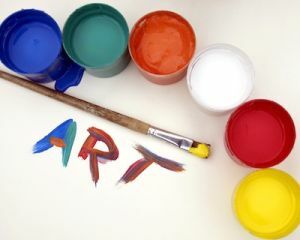 is over and the patient is ready to return to his old habitual life, he and his relatives discover that not all functions can be performed as before. This affects the general mood, the desire to return to the active life of the society.
is over and the patient is ready to return to his old habitual life, he and his relatives discover that not all functions can be performed as before. This affects the general mood, the desire to return to the active life of the society. - Emotional state, close to decadent .Having survived a serious illness, for a long time being far from their usual affairs, from friends, and in general - the range of activities, the patient even more "closes" from communication. Complexities with full socialization cause changes in the nervous system.
In these cases, art therapy solves several problems at once, which are fundamental for the patient to restore his or her functions completely or to the extent necessary. Rehabilitation sessions provide an opportunity to restore coordination skills, improve fine motor skills and stabilize the emotional state.
Methods of art therapy carry such functions:
- Communicatively - reflective .As a result of the lessons there is a correction of personal evaluation, forming communication skills and patience to one's condition. There is a desire to achieve great results and pride in their perseverance - this forms a common positive background for recovery.
- The cathartic - devastating .In this difficult period it is very important to get rid of negative thoughts, and this is possible, thanks to a sense of inner harmony.
- Regulatory - voltage relief .Positive psycho-emotional state is modeled due to improvement of the general environment and focus on the process.
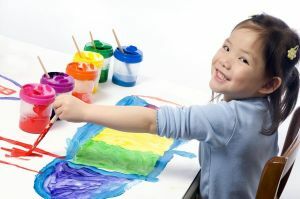 The patient undergoing rehabilitation, which includes systemic art therapy, within a fairly short time comes in harmony with his internal state. Through experienced positive emotions, he forms a new attitude to the situation and finds ways out of it.
The patient undergoing rehabilitation, which includes systemic art therapy, within a fairly short time comes in harmony with his internal state. Through experienced positive emotions, he forms a new attitude to the situation and finds ways out of it.
Most often, after a neurological illness, a person is prone to negative perception of the environment, and the connection with creativity, art and spiritual values frees aggression and negativity in the form of works.
Internal conflict is worked through by rendering it in the form of drawings, sculptures, some open in themselves a craving for painting or music, which remain a favorite occupation for the future life.
Methods and types of art therapy
There are many kinds of art that can be used for qualitative rehabilitation of patients. First of all, the patient and the doctor choose the most interesting area for discussion and study. If a person is not interested in this or that kind of art, it is difficult to force them to do. The patient himself must make a choice from the options offered by the therapist:
- Painting with paints, sand .Discuss artists' paintings or self-study. A patient inclined to painting and
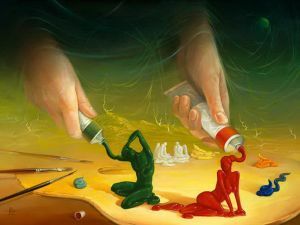 ready to discuss this topic, share his observations and are interested in commenting on his work - an excellent result of therapy.
ready to discuss this topic, share his observations and are interested in commenting on his work - an excellent result of therapy. - Sculpture and design of .Molding from all sorts of materials: clay, plasticine, special dough - gives the opportunity to develop fine motor skills, the ability to concentrate on the process and leads to general relaxation.
- Music and vocals .Listening to classical music, singing and playing musical instruments are largely relaxing and working with speech defects. After similar sessions the patient feels pleasure from an opportunity to prove himself.
- Literature and poetry .Reading always acts distracting and makes you plunge into the world of fantasy and another time and place. Composing small miniatures, poems, humoresques - all this will allow the doctor to understand the depth of the patient's experiences and problems, and later to correct the internal state by the same methods.
There is a method of group and individual lessons. The best option - group sessions, which solve the main problem - limiting communication with the society. An interactive group is the result of a qualitative work of a specialist.
During group sessions, the art therapist gives an assignment on a general topic or offers one of the patient's products for discussion. Thus, the ability to evaluate, to get away from restraint and constriction is formed.
Individual rehabilitation programs are most often aimed at inferring from a state of deep immersion in oneself. The therapist finds the topic interesting for discussion, tells a lot and causes the patient to dialogue. Correctly conducted individual lessons in the future go to the group.
Practical experience in rehabilitation centers
The construction of a rehabilitation program with the use of art therapy consists in the passage of several levels. Depending on the dynamics of improvement, the task becomes more complicated - this additional burden causes the patient to expand his capabilities, to open up and develop.
Experienced specialists in most cases apply the structure of the lesson in three parts:
- Introductory .In this part, the instructor analyzes the patients' condition, their mood, jokes and thereby agitates for active participation.
- The main working part of .Here, participants choose an occupation, decide whether it will be individual or group. Discuss the results, share impressions and feelings.
- The final part of the .In this part, the participants summarize, evaluate themselves, compare their previous work with the current one. The specialist analyzes the current state of patients, observes changes and makes decisions about the following works.

This kind of therapy is possible for use at home, but the patient does not get all the opportunities, the right support and the right ones - correcting his state of tasks. The specialist should have considerable training and experience in this very narrow field.
Coloring antistress, which are widely used in art therapy both at home and in rehabilitation centers:
patients are said. From the reviews of patients who have encountered art therapy.
After three months of my child underwent an art therapy course with a diagnosis of speech disturbance, we have significant changes. Group classes with children, an experienced specialist and the processes in which he took part - molding, drawing and creating fairy tales - made him communicate more, take an interest in fairy tales. Now he invents fairy tales and tells them in kindergarten.
Maria, 32
Half a year ago, father-in-law had a stroke. After we took him home, he became a completely different person - evil, aggressive and vulnerable. Previously, before illness, he was the head of the family and was happy with what is in demand: he was engaged in grandchildren, instilled in them a love of sports and books.
And after leaving the hospital found that he can no longer do this. I went through rehabilitation, which included art therapy. It turned out that he always had preconditions for painting. Now he is quite happy, he is engaged in previous affairs - the movements became much better, he learned to quench his irritation and live with insignificant restrictions.
Natalia, 35
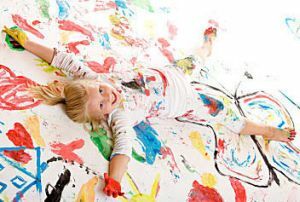 Art therapy, as an opportunity to express one's feelings, emotions and the possibility of socialization after suffering diseases, is used with high levels of validity.
Art therapy, as an opportunity to express one's feelings, emotions and the possibility of socialization after suffering diseases, is used with high levels of validity.
The application of this gentle method allows minimizing, and in some cases - coping with the results of the transferred diseases.
The practice of many clinics, studies and examples of the action of art therapy, allow us to talk about it as one of the main methods, along with physiotherapy, which return the patient to active life.

